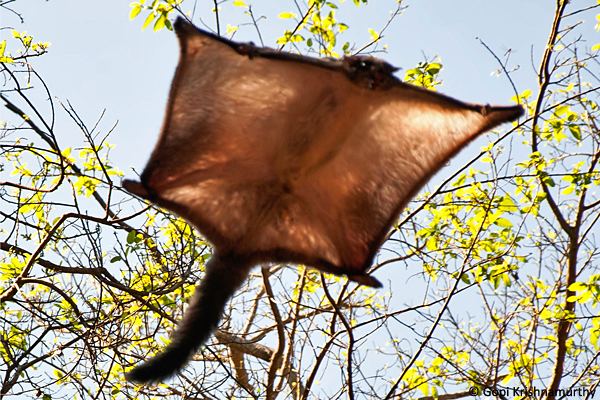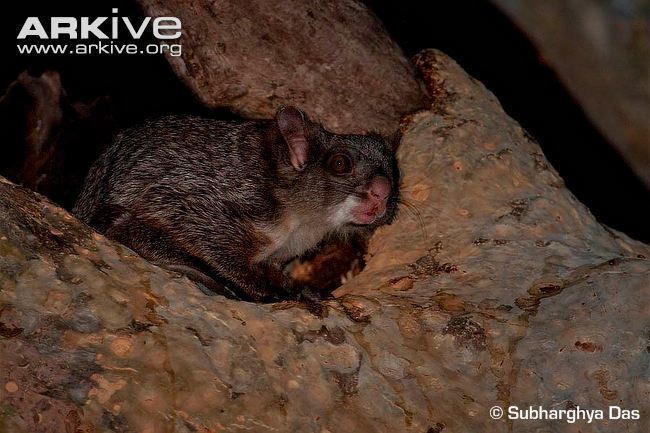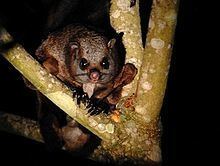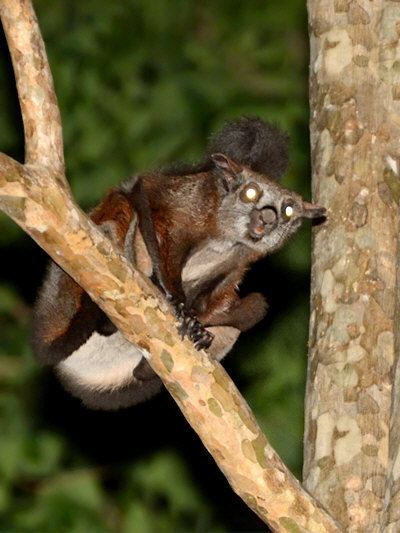Rank Species | Scientific name Petaurista philippensis Higher classification Petaurista | |
 | ||
Similar Petaurista, red giant flying squirrel, Hairy‑footed flying squirrel, Particolored flying squirrel, Hylopetes | ||
Indian giant flying squirrel
The Indian giant flying squirrel (Petaurista philippensis), also called the large brown flying squirrel or the common giant flying squirrel, is a species of rodent in the Sciuridae family. It is found in mainland Southeast and South Asia, and southern and central China.
Contents
- Indian giant flying squirrel
- The indian giant flying squirrel petaurista philippensis
- Description
- Distribution
- Ecology
- Diet
- Reproduction
- References

The indian giant flying squirrel petaurista philippensis
Description
Head and body length is usually 43 cm. Tail is 50 cm in male and 52 cm in female.

Black to gray brown in color and appears grizzled. A membrane in between the forelimb and hindlimb is developed for gliding through trees. Wing membrane is paler gray beneath. Tail hairy and blackish to gray brown. Feet is black. Nose is pale pink. Vibrissae black. Fur long and soft in upperparts, with gradually reduce through to the underparts.
Distribution
It is native to China, India, Laos, Myanmar, Sri Lanka, Taiwan, Thailand, and Vietnam.
Ecology

Nocturnal and arboreal squirrel, occurs in dry deciduous and evergreen forests, usually at higher elevations from 500m-2000m. In addition to natural forests, the animal is recorded from plantations. It is found to occupy tree canopies and holes.

These squirrels roost in tree hollows lined with bark, fur, moss, and leaves. They are known to be sociable when food is abundant in the surroundings; intraspecies attacks increase with food scarcity. The vocals of this squirrel is known to be similar to that of the spot-bellied eagle-owl.
Diet

Mainly frugivorous, they also eat bark, tree resins, shoots, leaves, insects, and larvae. According to research, they are known to be fond of Ficus racemosa, followed by Cullenia and Artocarpus heterophyllus. Leaves formed an important component of the diet and the leaves of F. racemosa were consumed more than those of any other species. Flying squirrels proved to be tolerant of disturbance and exploited food resources at the fragment edge, including exotic planted species.
Reproduction

Female gives birth to a single offspring during mid June. Offspring born blind and much lengthier than other mammalian offspring, where the head is disproportionately large when compared with the body.
